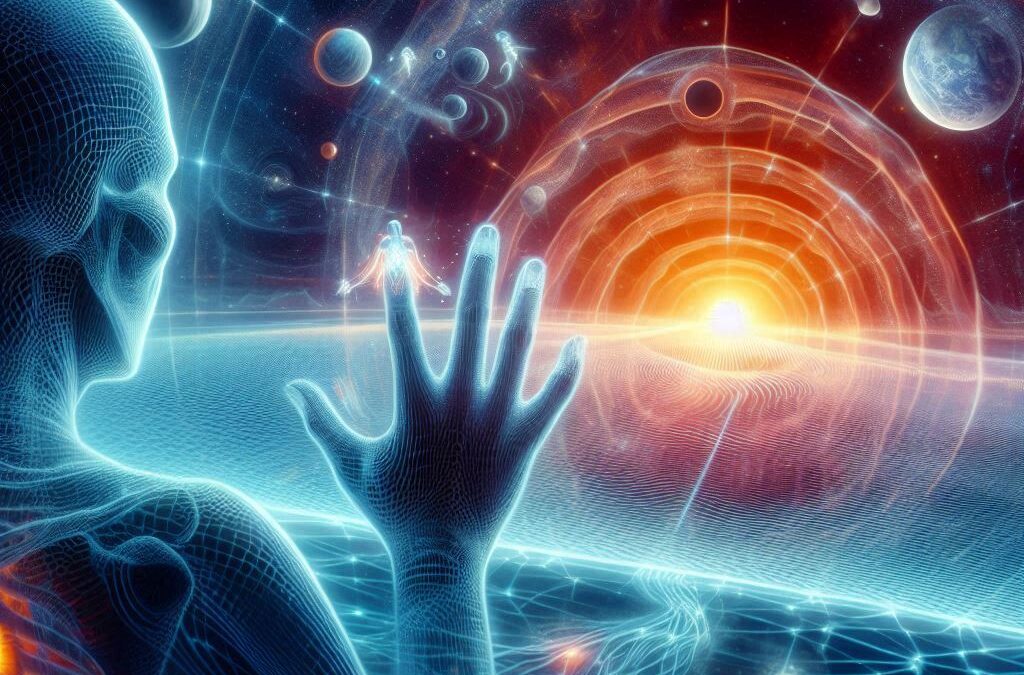In a Nutshell:
Near-Death Experiences (NDEs) have captivated human curiosity for centuries, offering insights into consciousness and possibly the afterlife. From vivid accounts of floating above their bodies to meeting deceased loved ones, NDEs blur the line between life and death. Studies suggest these phenomena reveal more than hallucinations—children’s detailed descriptions of unknown events, and even experiments attempting to weigh the soul, deepen the mystery. Could these experiences provide a glimpse of what lies beyond?
Peering Into the Veil: The Science and Mysteries of NDEs
1. What Happens During an NDE?
NDEs typically occur when someone is declared clinically dead or is close to death. These experiences often include:
- A sense of detachment from the body (out-of-body experience or OBE).
- A tunnel with a bright, welcoming light at the end.
- Encounters with deceased loved ones or spiritual beings.
- Life reviews, where the individual relives key moments in their life.
Notable studies, like those conducted by Dr. Raymond Moody (Life After Life), reveal that NDEs follow consistent patterns across cultures and age groups, suggesting a universal phenomenon rather than random brain activity.
2. Children’s Near-Death Experiences: Unexplainable Knowledge
Children who experience NDEs often recount vivid details of events they could not have known. For example:
- A young boy named Colton Burpo, featured in the book Heaven is for Real, described meeting a sister he never knew about—his parents later revealed she had been miscarried before his birth.
- In another case, a child described the layout of an operating room while unconscious, including conversations the doctors had.
These accounts challenge skeptics who claim NDEs are purely brain-based, as children’s knowledge often extends beyond what they’ve been exposed to in their lives.
3. The Soul and the “21-Gram Experiment”
One of the most famous attempts to measure consciousness physically came from Dr. Duncan MacDougall in the early 1900s. He theorized that the soul has weight and conducted experiments on dying patients to measure weight loss at the moment of death. His findings showed an average loss of 21 grams, though the results remain controversial and largely discredited scientifically.
Nonetheless, the experiment ignited debates about whether consciousness has a physical aspect that transcends the body, supporting theories of an afterlife.
4. Scientific Studies on NDEs
Modern research adds credibility to the NDE phenomenon:
- The AWARE Study (Awareness During Resuscitation) by Dr. Sam Parnia studied cardiac arrest patients. Some survivors accurately described details of their surroundings while clinically dead, despite no measurable brain activity.
- Functional MRI studies suggest that NDEs might arise from unique neurological activity in the dying brain, like bursts of gamma waves, but these do not explain vivid, verifiable recollections.
5. NDEs and the Afterlife Debate
Accounts from those who’ve experienced NDEs consistently emphasize feelings of peace, unconditional love, and a connection to a greater reality. These experiences challenge materialist views of consciousness as a purely brain-bound process:
- If NDEs result from brain activity, why do they sometimes include information not available to the individual (e.g., events in other rooms)?
- The universality of NDE descriptions, including among skeptics and atheists, points to shared elements of human consciousness that transcend cultural conditioning.
6. Skeptical Interpretations
Critics argue that NDEs are products of a dying brain:
- Anoxia (lack of oxygen) can trigger hallucinations.
- Neurochemical surges may create sensations like tunnels or lights.
- Memories of resuscitation attempts could be misinterpreted post-revival.
While these explanations are plausible, they fail to address verifiable accounts (e.g., children describing unknown events).
What Do NDEs Teach Us About Consciousness?
The question of whether NDEs reveal an afterlife remains unanswered. However, they highlight critical aspects of consciousness, such as:
- Its potential independence from the brain, as suggested by veridical perceptions during NDEs.
- A universal human capacity for transcendent experiences, which may point to deeper connections between life and death.
Whether spiritual or scientific, NDEs inspire humanity to explore the boundaries of existence, leaving us to wonder: is death an end, or merely a beginning?
Citations:
- Moody, Raymond A., Life After Life.
- Parnia, Sam et al., The AWARE Study, Resuscitation Journal.
- MacDougall, Duncan, Hypothesis Concerning Soul Substance.

